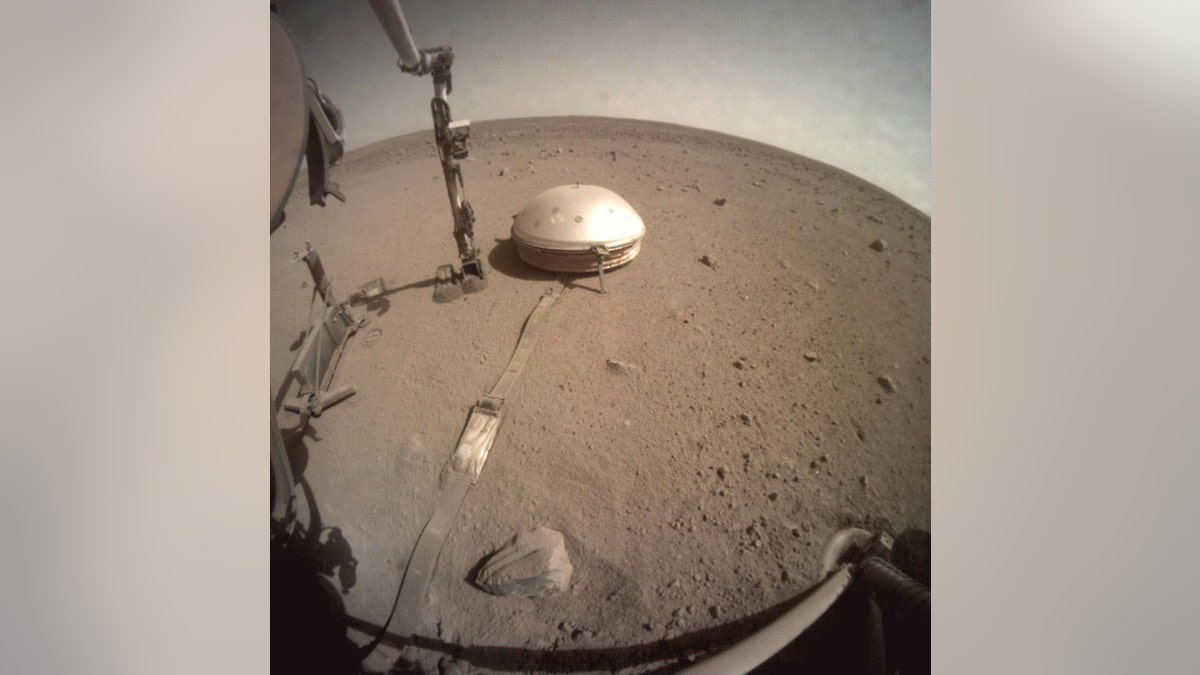NASA releases audio of Mars helicopter in flight
Goddard Space Center Chief Scientist Jim Garvin provides insight on ‘Fox New Live.’
NASA's InSight Mars Lander has recorded its biggest quake on Mars ever.
According to new research published in the American Geophysical Union (AGU) journal Geophysical Research Letters, the international team said on the Earth night of May 4, the lander's seismometer detected a quake that was at least five times as big as the next largest one recorded on the red planet.
"This was definitely the biggest marsquake that we have seen," Taichi Kawamura, lead author and planetary scientist at the Institut de physique du globe de Paris, France, said in a release.
Co-author and seismologist John Clinton, of the Swiss Federal Institute of Technology in Zürich, said the energy released by the single marsquake is equivalent with the cumulative energy from all other marsquakes seen thus far.
NASA'S MARS LANDER INSIGHT TRANSMITS POTENTIAL FINAL IMAGE OF THE RED PLANET AS ITS POWER DWINDLES
Clinton, who is a co-leader with Kawamura at the marsquake service, said the waves recorded at InSight were so big that they almost saturated the seismometer.

A view of Mars from NASA's Mars InSight Lander. (NASA/Twitter)
The waves from the marsquake last for about 10 hours.
No previous marsquake's waves had exceeded the length of an hour.
The previous biggest tremor, recorded in August 2021, was around a magnitude of 4.2, while the May quake had a magnitude of 4.7.
The epicenter of the quake was outside the most seismically active region on Mars.
This seismic event was also rare in that it exhibited characteristics of both high- and low-frequency quakes.

The domed seismometer on NASA’s InSight Lander measured Mars’s largest quake. (NASA/JPL-Caltech.)
The data from this large quake were released in October by the Mars Seismic Experiment for Interior Structure (SEIS) data service, NASA Planetary Data System (PDS) and the Incorporated Research Institutions for Seismology (IRIS), together with the marsquake service catalog.
IMAGE FROM NASA'S WEBB TELESCOPE REVEALS EARLY STELLAR FORMATION IN 'RARE' FIND
Seismology on Mars can help researchers better understand what's underneath its surface and its evolution.
Most marsquakes are believed to occur due to fault movements.

This image shows InSight’s domed Wind and Thermal Shield, which covers its seismometer, called Seismic Experiment for Interior Structure, or SEIS. (NASA/JPL-Caltech)
InSight is thought to be near its operational end because dust has progressively covered its solar panels and reduced its power.
"We are impressed that almost at the end of the extended mission, we had this very remarkable event," Kawamura said.
Based on the data gathered from the marsquake, "I would say this mission was an extraordinary success," he continued.
CLICK HERE TO GET THE FOX NEWS APP
"My power’s really low, so this may be the last image I can send. Don’t worry about me though: my time here has been both productive and serene. If I can keep talking to my mission team, I will – but I’ll be signing off here soon," Insight's 25-30 person team posted to the lander's Twitter on Monday. "Thanks for staying with me."
Since it landed in November 2018, the lander has provided insight on Mars' liquid core and the composition of its other interior layers. It has detected hundreds of quakes.
Fox News' Paul Best contributed to this report.


